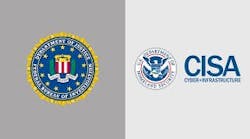Security professionals and consultants embarking on new site development and existing site renovation face the challenge of ensuring that the property design will include appropriate levels of built-in security. The principles of Crime Prevention through Environmental Design (CPTED) can help achieve this, and they play a role in a number of voluntary guidelines and standards in the public and private sectors.
Crime Prevention through Environmental Design was introduced in 1971, when C. Ray Jeffery published the book Crime Prevention Through Environmental Design. The theory focuses on creating spaces that naturally deter crime by playing on the perceived psychological cues that would make a criminal hesitate to target the area. It capitalizes on open spaces, careful lighting, well-placed windows and other techniques that would make it difficult for a criminal to find a hiding place. It also recommends creative landscaping, strong signage, use of a single access point and appropriate fencing to clearly delineate public areas from private areas and to reinforce electronic access control.
The federal Facilities Standards for the Public Buildings Service, the document that establishes design standards and criteria for new buildings and alterations for the Public Buildings Service (PBS) of the General Services Administration (GSA), highlights CPTED as a theoretical backbone of its requirements. Similarly, Florida’s Safe Neighborhoods Act incorporates elements of CPTED in its requirements for business and residential community planning. Cities such as Ann Arbor, Mich., Tempe, Ariz., and Tampa, Fla., also have issued either recommendations or ordinances to include CPTED in planning.
CPTED plays a role in private-sector guidelines as well. After the shooting at Virginia Tech University last spring, The International Association of Campus Law Enforcement Administrators recommended that Congress pass an emergency funding package to address immediate campus public safety needs, including CPTED training. NFPA 909, Code for the Protection of Cultural Resource Properties — Museums, Libraries and Places of Worship, recommends the use of CPTED in preventing arson. The principles also impact information systems security; knowledge of CPTED is a requirement for passing the CISSP exam.
Training on CPTED is available from several sources, including ASIS International (www.asisonline.org), the National Institute of Crime Prevention (www.nicp.net), the National Crime Prevention Council (www.ncpc.org), and a number of specialty training organizations. If this concept is new to you, consider registering for a basic course. The knowledge you gain could pay for itself.
Marleah Blades is senior editor for the Security Executive Council, an international professional membership organization for leading senior security executives spanning all industries, both the public and private sectors, and the globe. The Security Executive Council maintains a large and growing list of laws, regulations, standards and guidelines that impact security (https://www.securityexecutivecouncil.com/public/lrvc). For more information about the council, visit www.SecurityExecutiveCouncil.com/?sourceCode=std.

